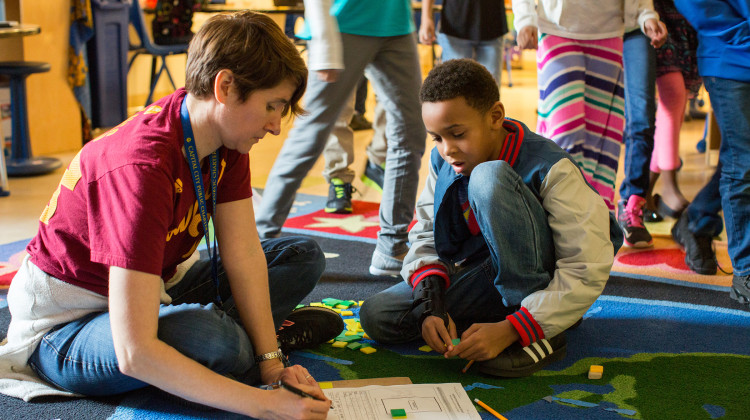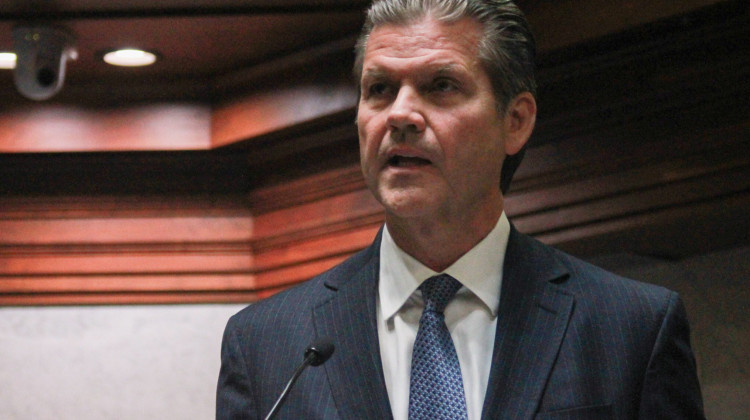Indianapolis Public Schools leaders bet a partnership with IndyGo will lead to future savings worth millions of dollars by eventually eliminating yellow buses for high school students.
Cutting transportation costs and redirecting funds into teacher and principal salaries is one of the district’s biggest goals as it struggles with decreased state funding and an impending deficit. In the wake of the voter-approved tax referendum, the district partnered with Indy Chamber to find more savings and rethink how the district operates.
The Indy Chamber aims to save $111 million in transportation costs over eight years, starting with the upcoming 2019-20 school year. A major step toward that would be the end of yellow bus service for high school students and a partnership with IndyGo to provide year-round ride cards for students at a highly discounted rate.
A two-year pilot project to do that begins in August when Indianapolis high school students can choose to ride the traditional yellow bus or hop on an IndyGo bus. IPS and the transportation corporation are offering public bus passes to the 5,000 students in grades 9-12 at Arsenal Tech, Crispus Attucks, George Washington, Shortridge and KIPP Legacy high schools.
The IndyGo pass would let students ride the Red Line or other bus lines that would drop them off at their school and return them to a bus stop near their home. The combination IPS identification card-bus pass can be used year-round, 24-hours a day for students to travel to jobs or extracurricular activities.
IndyGo routes for students will be dictated by existing bus lines and stops, Bryan Luellen, IndyGo vice president of public affairs, told IPS Board members. Depending on where a student lives and which school they attend, a student could wait from 15 minutes to 30 minutes for a bus to make a stop.
Dennis Tackitt, district chief of transformation, says a strong push by the district, school staff and student leaders should increase IndyGo ridership by students until an expected end of yellow bus services for its high schools in Fall 2021.
Training on how to use the bus system will be ongoing. Free one-week parent rides will be offered to help students prepare for bus ride alone.
“We anticipate there may be some hesitation on the parts of parents, regarding a change in ridership philosophy, we want to provide ongoing opportunities throughout the year for them to be trained,” Tackitt told the IPS School Board Thursday night.
The district spends $12 million per year on high school transportation costs, Tackitt says. If the IndyGo partnership works, it is possible most of that expense could be eliminated. Tackitt says IPS could pay an estimated $500,000, or $100 per high school student, for IndyGo to be the district’s transportation source for high schoolers.
The pilot program will cost $75,000 this year and yellow bus services will remain available to high school students. Starting in 2020-2021, the district will pay $160,000 and the yellow bus service could be reduced.
“That is a huge give on the part of IndyGo, a huge sign of collaboration and cooperation,” Tackitt says.
The total district transportation makes up about 10%, or more than $40 million, of the IPS budget. In past years, the district spent $7 million to $10 million more on transportation annually than the amount of funding received from local property taxes for busses.
In a report by the Indy Chamber, it found IPS spends more on transportation per student than other urban school districts in the country that allow students to chose which school they attend, such as Denver and Detroit. Those cities use public transportation options for older students.
Contact WFYI education reporter Eric Weddle at eweddle@wfyi.org or call (317) 614-0470. Follow on Twitter: @ericweddle.
 DONATE
DONATE








 Support WFYI. We can't do it without you.
Support WFYI. We can't do it without you.